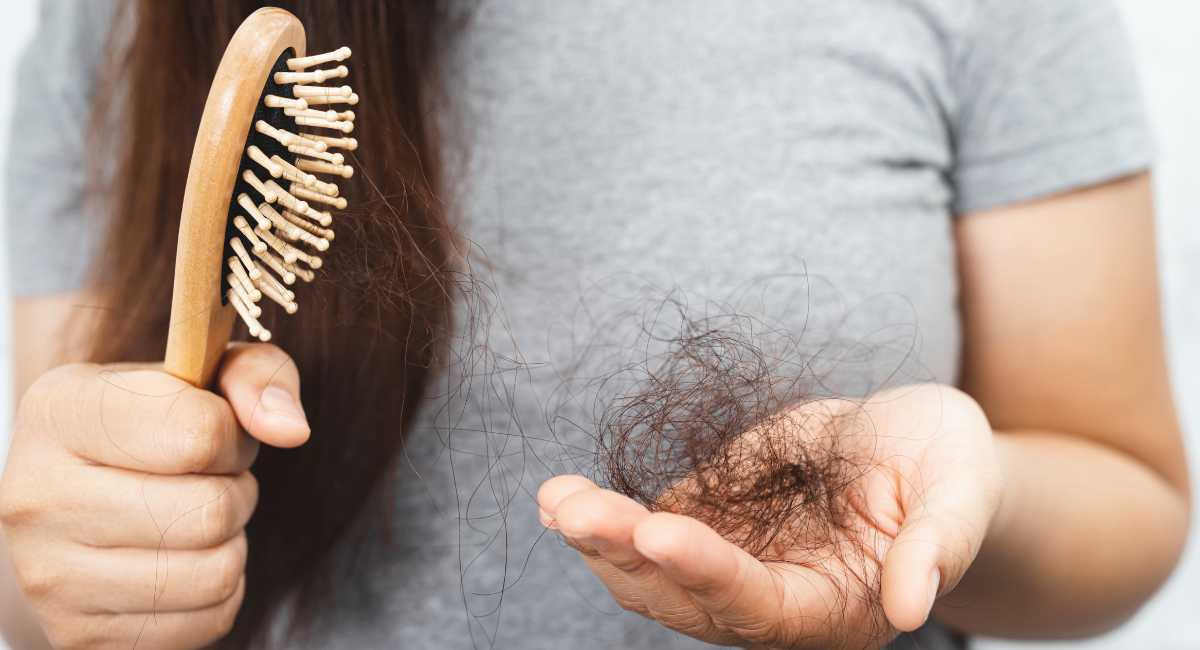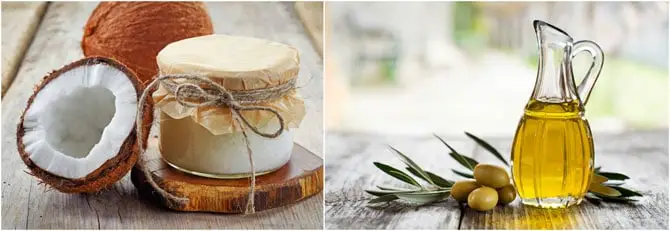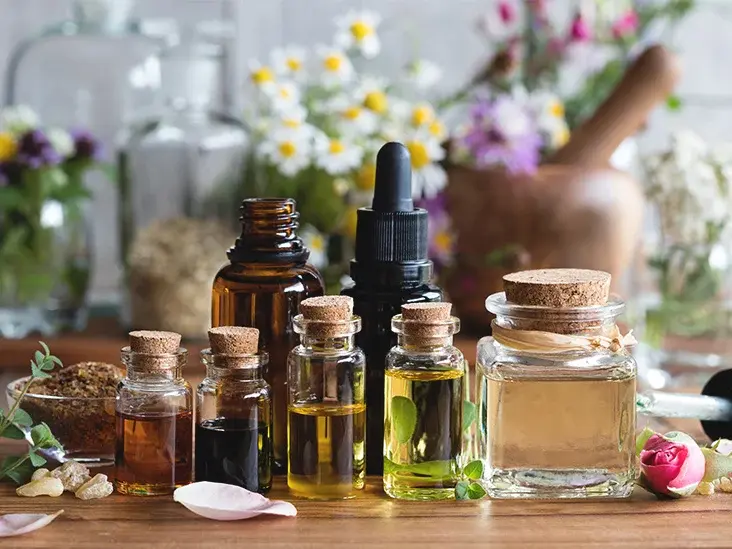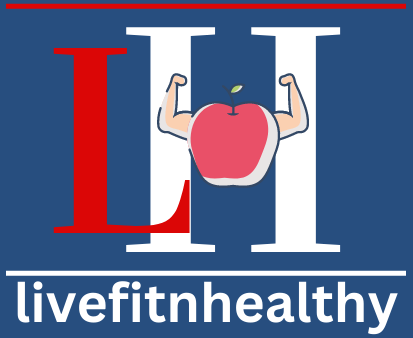Hair Loss Prevention: 20 Simple ways to Treat Your Hair Loss
 Hair Loss While Combing
Hair Loss While Combing
There are various things you can do to slow or treat hair loss. Here in the article, we mention 20 simple ways to treat hair loss. However, what to do depends on why you are losing your hair. Some situations may resolve automatically, such as hair loss after pregnancy (telogen effluvium).
Remember that everybody sheds hair daily, which is perfectly normal.
When hair loss is persistent, you should go to see your doctor, and he may be able to diagnose the correct reason. Some other health issues can cause hair loss. For example, thyroid, stress, scalp infections, androgenic alopecia, or simply aging.
Let’s see 20 simple ways to treat hair loss in the following:
What Diet Take For Hair Loss Prevention:
1. Mediterranean diet:
 Mediterranean Diet
Mediterranean Diet
Archive Of Dermatology research (2018) revealed that a diet containing fresh herbs and salad might reduce the risk of Androgenetic Alopecia (female or male pattern baldness) or slow its onset.
The Mediterranean diet is considered to be a healthy way of eating because it is high in nutrients and plant-based foods, which are linked to a lower risk of hair loss and other chronic diseases.
Most promising results were observed when participants consumed a high amount of Mediterranean foods more than three days a week.
2. Protein
As we all know, hair follicles are made mainly of a protein called keratin. In a study (2017), 100 Participants with hair loss showed a deficiency of several components, such as proteins, minerals, and essential amino acids, that serve as protein building blocks.
While researchers state that eating a protein-rich diet may help prevent hair loss.
Healthy choices include eggs, berries, spinach, fatty fish, sweet potato, avocado, nuts, beans and peas, fish, low-fat dairy products, chicken, and turkey.
3. Vitamin A
Vitamin A helps to produce sebum which moisturizes the scalp and helps to keep your hair healthy.
Suppose your diet is deficient in vitamin A; it may lead to several problems, including hair loss. While getting enough vitamin A is essential, you don’t want too much.
Studies show recommended daily limit of approximately 10,000 IU a day, and exceeding the limit of too much vitamin A can also contribute to hair loss.
Thus, You should fill your plate with foods rich in vitamin A, for example, sweet potatoes, sweet peppers, spinach, etc.
Supplements:
4. Biotin
Biotin, known as vitamin B7– is essential for cells inside your body.
It stimulates keratin production in your hair and helps increase the follicle growth rate.
This is essential to the hair life cycle; low levels can cause hair loss. Your vitamin B7 level may be low if you’re pregnant, breastfeeding, or taking certain antibiotics or epilepsy drugs.
An adult should take around 30 mcg/day; however, breastfeeding women should increase their dosage to 35 mcg/day. Thus, you should seek your doctor’s advice and guidance before taking this.
5. Vitamin D
As we already know, Vitamin D is essential for bones. But, have you known that low levels of it are also linked to hair loss?|
When you get sunlight, your skin makes vitamin D, but many people can’t get enough from the sun alone.
You can boost the levels by taking a vitamin D-rich diet, such as eating fatty fish and eggs or drinking fortified milk.
Furthermore, you can also ask your doctor to suggest 400-1000 IU of vitamin D daily. Also, spending 15-30 minutes in the sun each day and taking magnesium with Vitamin D will improve bioavailability.
6. Iron
Hair loss due to iron deficiency is not permanent, and the most helpful way to treat hair loss is to find the cause of the problem.
Suppose your hair loss is related to an iron deficiency; without delay, consult your doctor.
He will recommend you test Ferritin in the blood to check total body iron stores in your body.
Ferritin is a protein that is essential in storing iron in our bodies. The less ferritin in your blood, the less iron your body will store up.
Some studies show that if you replenish iron supplements to hair-loss patients, they are more likely to reverse (regrow) hair or stop hair shedding. Take an iron-rich diet and supplements with the suggestion of your doctor.
7. Zinc
Zinc is an essential trace element, meaning the body cannot develop it on its own; it must be delivered through the diet. The principal dietary sources of zinc are fish and meat.
8. Saw Palmetto
Serenoa repens or Saw palmetto is a Native American small palm tree plant with small berries. It has been used as a medicine and food for hundreds of years.
There’s proof that this herbal remedy may treat an enlarged prostate and has also been used to treat hair loss.
A small study in 2012 revealed that 38% of participants who took 320 milligrams (mg) saw Palmetto every day and experienced hair growth.
Medical treatments:
9. Leser Therapy
Low-level laser therapy — known as red light therapy and cold laser therapy- is used to improve the hair density of people with genetic hair loss and loss due to chemotherapy. It stimulates epidermal stem cells.
According to 2103 research, patients are treated at home for 16 weeks every other day, with follow-up and photography at 16 weeks.
The end result showed a positive outcome with increased hair counts from baseline.
10. Platelet-Rich Plasma
Platelet-rich plasma (PRP) therapy for hair loss is a three-step medical treatment.
In the first step, the person’s blood is drawn, then processed, and the final step is injected into the scalp.
Some studies show that PRP injections help stimulate hair growth by improving blood supply to the hair follicle and growing the thickness of the hair shaft.
The 2017 study, after four sessions on 11 participants, shows 30 to 40 percent hair regrowth which they have lost before. According to Cleveland Clinic, the cost per injection session is between $500 and $1000.
Medication Treatment:
11. Minoxidil
Minoxidil comes in liquid forms (foam and shampoo). Furthermore, you can buy it over-the-counter (nonprescription). If you want better results, it should be applied to the scalp skin once a day for women and twice a day for men.
According to the Mayo Clinic, it will take at least six months to prevent further hair loss or regrow hair.
Most people prefer to apply foam when the hair is wet.
It has some side effects, including scalp irritation and acne on the application site.
Moreover, some people can experience rare side effects such as irregular heartbeat and blurred vision.
12. Finasteride (Propecia).
Finasteride, also known as Propecia, is a prescription drug for men, and you take it daily as a pill.
Men taking Finasteride experience slow hair loss, and some have shown regrowth.
However, it may take a couple of months to tell whether it’s working for you. Thus, you will need to keep taking it to retain any benefits.
Furthermore, Finasteride may not work for men over 60.
Oil Massage Stimulate Scalp
 Olive And Coconut Oil For Hair Loss Prevention
Olive And Coconut Oil For Hair Loss Prevention
13. Olive Oil:
Olive oil is rich in antioxidants, and these antioxidants help maintain scalp and hair health.
Moreover, protect them from free radical damage. These free radicals are dangerous molecules that cause cell damage.
Antioxidants help stabilize free radicals and prevent hair damage or loss.
Apply olive oil, massage the scalp for 5-10 minutes, and let it sit for 30 minutes before washing.
It will improve blood circulation, promoting hair growth.
14. Coconut oil:
According to a study in 2018, researchers believe coconut oil may also prevent hair damage and restore protein loss due to grooming processes and ultraviolet (UV) exposure.
Lauric acid, the primary fatty acid found in coconut oil, helps bind the protein in hair.
It protects follicles from a breakage at the root and strand.
Massaging coconut oil into the scalp once or twice a week may promote better blood circulation and help with regrowth.
15. Avoid Tractions And Heat Styler:
Traction alopecia is hair loss caused by repeatedly pulling on your hair.
Hair loss can occur if you often wear a hairband in a tight ponytail, bun, or braids, mainly if you use chemicals or heat on your hair.
Thus, avoid heat-based equipment like blow dryers and curling irons.
16. Use Fewer Chemicals And Hair dyes:
Avoid harsh chemical products such as hair colors or fizz spray.
Take help or advice from a trained professional hairdresser.
Take advice from a hairstylist to use organic hair dyes which don’t contain ammonia, peroxide, or para-phenylenediamine (PPD).
Hair Care
17. Use Warm Water And Mild Shampoo:
Wash your hair with a mild shampoo. Because harsher formulas may dry hair and cause it to break, leading to hair loss.
Washing your hair protects hair from falling. However, Overwashing or washing your hair daily will strip it of the natural oils produced by your scalp.
But it depends on the hair type, such as thinner hair buildup more frequently because there is less hair to absorb the oils.
However, those with thicker, coarser hair should aim every five to seven days.
Use warm water to wash hair because it opens the cuticle and helps rinse out dirt and debris. Using hot water to wash your hair cause your hair to become brittle and lose hair.
Other Treatments:
18. Essential oils:
Essential oils may help reduce hair loss.
In a 1988 study, 86 alopecia patients were randomly picked and divided into two groups.
One group is massaged with essential oils such as thyme, rosemary, lavender, and cedarwood daily in a mixture of carrier oil, for example, jojoba and grapeseed, on their scalp daily bases.
However, the control group used only jojoba and grapeseed oil for daily scalp massage.
According to the research, patient in the active group showed 44% improvement compared with 15% in the control group.
Moreover, they have shared the recipe used for the essential oil massage!
Here it is:
 Essential Oils: Hair Massage
Essential Oils: Hair Massage
- 2 drops of Thyme essential oil
- 3 drops of Lavender essential oil
- 3drops of Rosemary essential oil
- 2 drops Cedarwood essential oil
- 3ml jojoba oil
- 20ml grapeseed oil
Apply this oil mixture to your scalp 10-20 minutes before hair wash.
19. Onion Juice:
People with alopecia areata may see hair re-growth after applying crude onion juice to their scalp twice a day.
A small 2014 study showed that crude onion juice gave significantly higher results about hair re-growth in people with alopecia areata.
People with alopecia areata may see regrowth after applying crude onion juice to their scalps twice daily.
However, the research on this treatment is limited. A small study in 2014 showed that onion juice did boost hair growth in nearly 87 percent of the participant.
It is believed the magic lies in the onion’s sulfur content.
It has rich content of sulfur which helps to nurture your hair follicles.
Moreover, rich sulfur content also helps in minimizing hair thinning and breakage.
20. Yoga Exercise:
Yoga is a great way to eliminate stress. Some evidence suggests that certain yoga poses may help stimulate hair growth and prevent hair loss. Here are some yoga poses that may be beneficial:
- Sarvangasana (Shoulder Stand Pose): This pose can improve circulation to the scalp, which may help promote hair growth.
- Sirsasana (Headstand Pose): This pose can also improve circulation to the scalp and may help stimulate hair growth.
- Matsyasana (Fish Pose): This pose can help improve circulation to the scalp and stimulate the thyroid gland, which is essential for healthy hair growth.
- Uttanasana (Standing Forward Bend Pose): This pose can help improve circulation to the scalp and stimulate the thyroid gland.
- Adho Mukha Svanasana (Downward Facing Dog Pose): This pose can help improve circulation to the scalp and stimulate the thyroid gland.
It’s important to note that while these poses may help prevent and slow hair loss.
However, they are not a substitute for medical treatment if you are experiencing extreme hair loss.
If you are concerned about hair loss, It’s a good idea to consult a dermatologist or other medical professional.
They can help diagnose the cause of your hair loss and recommend treatment options.
The Bottom Line:
If you want to stop or reverse hair loss, you must take time every day to focus on nourishing your hair.
Thus, you should come up with a plan and stay consistent. Remember that all the treatments or home remedies may take a few months to show noticeable outcomes. As for the home remedies, be creative and mix them up as much as possible.
Do your best to keep a healthy lifestyle by taking a diet or supplements that complement your hair treatment plan.
Speak with your doctor regarding the medications if the natural remedies don’t work for you.
Frequently Ask Questions:
How to stop hair loss and promote healthy hair?
- Stay away from hairstyles that pull on the hair.
- Avoid using hot equipment for styling your hair.
- Never bleach or chemically treat your hair.
- Use a gentle shampoo that is suitable for your hair.
- Make use of a gentle brush made of natural Fibers.
- Try light treatment with modest intensity.
Which foods stop hair fall?
- Protein: Meat, poultry, fish, eggs, and beans.
- Iron: Red meat, poultry, beans, nuts, and leafy green vegetables.
- Zinc: meat, shellfish, beans, nuts, and whole grains.
- Vitamin A: sweet potatoes, carrots, spinach, and eggs.
- Vitamin C: oranges, strawberries, and broccoli.
Can lost hair regrow again?
A: Hair loss can be caused by various factors, including genetics, hormonal imbalances, certain medications, and certain medical conditions.
In those cases, addressing the hair loss’s underlying cause can help stop or reverse the hair loss. For example, if the hair loss is due to a hormonal imbalance, treating the imbalance may help the hair to regrow.
In other cases, hair loss may be permanent, and it may not be possible to regrow the lost hair. For example, if the hair follicles have been damaged or destroyed, it may not be possible for the hair to regrow.


Comments are closed.